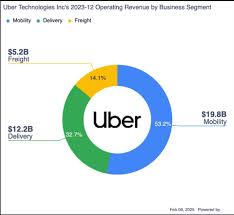Imagine walking into your favorite store and seeing your go-to product marked down because people are too scared to buy it. Would you hesitate or take advantage of the sale? The stock market works in a similar way. When panic strikes—especially over tariffs—prices drop, but for savvy investors, that means opportunity knocks.
Trade wars and tariff fears often send shockwaves through the stock market, leading to panic selling. But history has shown that these downturns can create golden buying opportunities, particularly for dividend growth investors. In this article, we’ll explore why tariff panic happens, how it affects dividend stocks, and how investors can benefit from the uncertainty.
Table of Contents
| Sr# | Headings |
|---|---|
| 1 | Understanding Tariff Panic |
| 2 | Why Markets React to Tariff Announcements |
| 3 | Dividend Stocks: Safe Haven or Risky Bet? |
| 4 | How Fear Creates Buying Opportunities |
| 5 | Historical Examples of Tariff-Driven Market Dips |
| 6 | Key Sectors Affected by Tariffs |
| 7 | Identifying Strong Dividend Growth Stocks |
| 8 | Strategies to Profit During a Market Panic |
| 9 | Common Mistakes to Avoid |
| 10 | The Long-Term Perspective on Dividend Investing |
| 11 | How to Spot Undervalued Stocks |
| 12 | Balancing Risk and Reward |
| 13 | Expert Insights on Tariff-Related Market Moves |
| 14 | When to Buy and When to Hold |
| 15 | Final Thoughts on Tariff Panic Investing |
Understanding Tariff Panic
Tariff panic occurs when governments announce new tariffs, sparking fear in the market. Investors worry about rising costs, reduced profits, and economic slowdowns. This often leads to a knee-jerk reaction where stocks, particularly those in affected industries, take a hit.
Why Markets React to Tariff Announcements
When tariffs increase, companies face higher production costs, which can shrink their profit margins. Investors, fearing reduced earnings, tend to sell off stocks, leading to sharp market declines. However, these reactions are often exaggerated and present opportunities for long-term investors.
Dividend Stocks: Safe Haven or Risky Bet?
Dividend stocks are often seen as safe havens during market volatility. Companies with strong balance sheets and consistent dividend payouts tend to weather economic storms better. However, not all dividend stocks are created equal, so investors need to choose wisely.
How Fear Creates Buying Opportunities
When fear grips the market, stock prices drop—even for companies with solid fundamentals. This means investors can buy high-quality dividend stocks at a discount, locking in attractive yields and long-term growth potential.
Historical Examples of Tariff-Driven Market Dips
Looking back at past trade disputes, such as the U.S.-China trade war, we see that tariff fears caused short-term market declines. However, patient investors who bought during the dips benefited from long-term gains.
Key Sectors Affected by Tariffs
Some sectors are more vulnerable to tariff changes than others. These include:
- Manufacturing: Higher costs for raw materials.
- Technology: Supply chain disruptions.
- Agriculture: Export restrictions.
- Consumer Goods: Price increases impacting demand.
Identifying Strong Dividend Growth Stocks
During tariff panic, focus on companies with:
- A history of dividend growth
- Low debt levels
- Strong cash flow
- Sustainable business models
Strategies to Profit During a Market Panic
- Buy on Dips: Purchase undervalued stocks with strong fundamentals.
- Reinvest Dividends: Use dividends to buy more shares at lower prices.
- Diversify Portfolio: Spread risk across different sectors.
Common Mistakes to Avoid
- Panic Selling: Selling out of fear locks in losses.
- Chasing High Yields: Not all high-yield stocks are safe investments.
- Ignoring Fundamentals: Always research company earnings and cash flow.
The Long-Term Perspective on Dividend Investing
History shows that short-term volatility doesn’t change the long-term success of strong dividend companies. Investors who remain patient and continue reinvesting dividends benefit from compounded growth over time.
How to Spot Undervalued Stocks
Look for:
- Price-to-earnings (P/E) ratios lower than historical averages
- Consistent dividend increases
- A strong track record of financial performance
Balancing Risk and Reward
While buying during a tariff-induced sell-off can be rewarding, always assess risk. Diversification, thorough research, and a focus on quality companies can help manage uncertainty.
Expert Insights on Tariff-Related Market Moves
Financial experts often suggest that tariff panic is temporary. Smart investors use these periods to accumulate shares in quality companies at discounted prices.
When to Buy and When to Hold
- Buy: When fear is high and strong stocks are undervalued.
- Hold: When your investments still align with your long-term strategy.
Final Thoughts on Tariff Panic Investing
Market fears around tariffs often create unique opportunities for dividend growth investors. While volatility can be unsettling, those who recognize these moments as buying opportunities stand to benefit in the long run. Instead of following the panic, follow the fundamentals—and you might just find some hidden gems in the market.
FAQs
1. What is a tariff panic?
A tariff panic happens when investors react negatively to government-imposed tariffs, causing market sell-offs.
2. Why do dividend stocks make good investments during tariff panic?
Dividend stocks provide consistent income and are often from financially stable companies that can withstand market volatility.
3. How can I identify strong dividend stocks during a market downturn?
Look for companies with consistent dividend growth, low debt, strong earnings, and a history of stability.
4. Should I sell my stocks during a tariff panic?
Not necessarily. Many stocks rebound after initial panic selling, making it a better time to buy than sell.
5. How long does it take for the market to recover from a tariff panic?
Recovery times vary, but historically, markets tend to bounce back once fears subside and investors regain confidence.
By staying informed and looking beyond short-term fears, investors can turn market turbulence into long-term gains. Happy investing!
